Day 3: Pisa and Florence
We had dinner at 7 am and left for Pisa at 7:45. During the hour-and-a-half trip from Florence to Pisa, Mrs. Cross talked to us about Galileo, particularly how many of his contemporaries did not trust his heliocentric view of the universe. Mrs. Cross showed us that one way Galileo proved that the universe was heliocentric—the phases of Venus, and more importantly how it “grows” and “shrinks”. Of course, it is not changing in size, it is simply moving farther or closer to Earth. The recorded changes in Venus’ position would be impossible to incorporate into the geocentric model, as the orbits of planets are perfectly circular in this model. At the end of the bus ride, we found ourselves in Pisa, specifically at the Piazza dei Miracoli, the location of the leaning tower of Pisa. Before we could visit that, however, we had two other places to visit
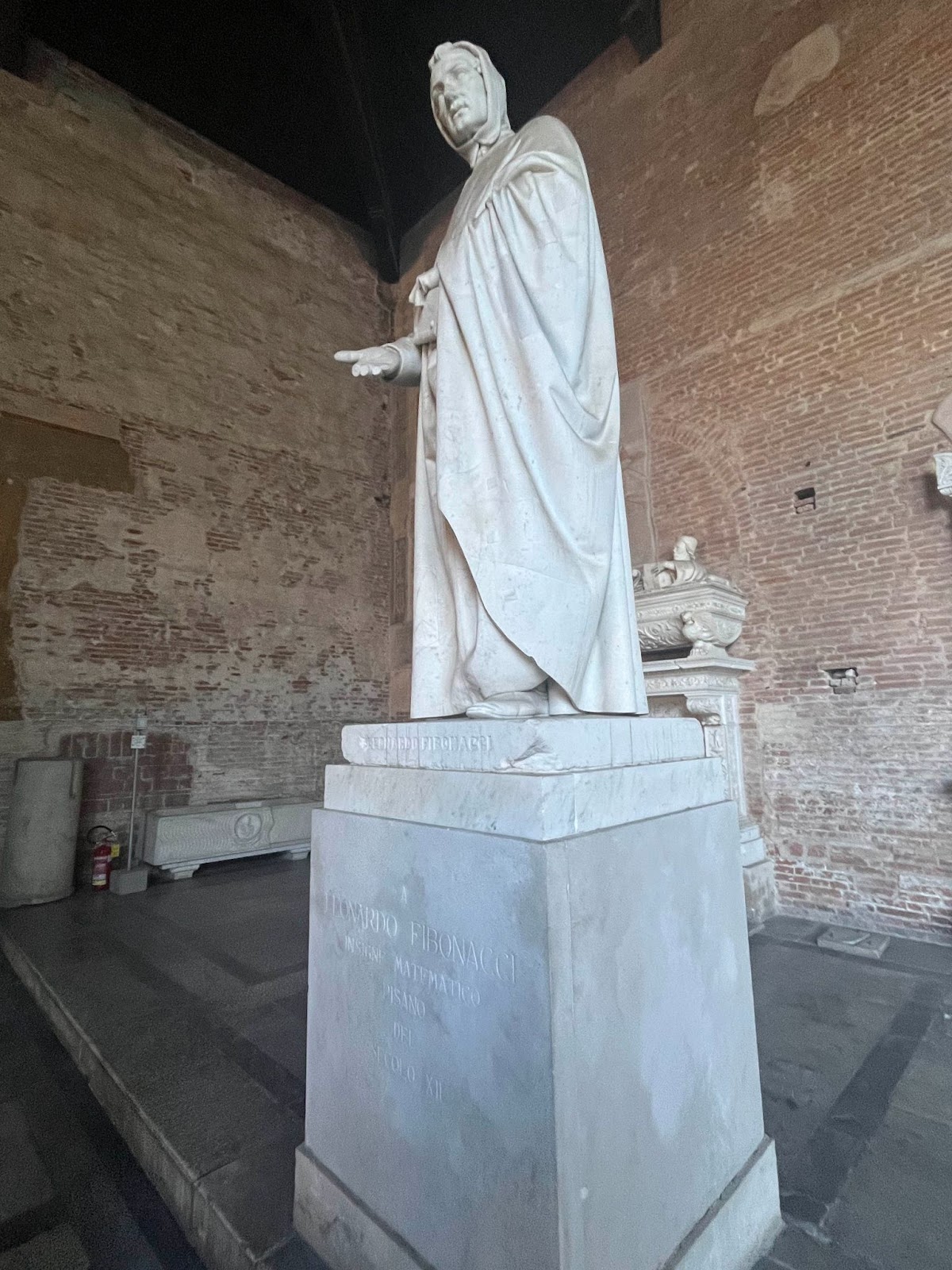 We first visited a section with statues and many murals on the walls. The statues were of many important people, including Fibonacci. The murals were of very important events in Christianity. The one that we focused on was depicting the last judgment, where Jesus would return once more and judge humanity. On one side of the painting contained the ones who lived their life well, triumphing in heaven. On the other side were the sinners being tortured by the devil. Due to age, most of the murals are incomplete. Also here was where many people were buried. Next, we went to the baptistry.
We first visited a section with statues and many murals on the walls. The statues were of many important people, including Fibonacci. The murals were of very important events in Christianity. The one that we focused on was depicting the last judgment, where Jesus would return once more and judge humanity. On one side of the painting contained the ones who lived their life well, triumphing in heaven. On the other side were the sinners being tortured by the devil. Due to age, most of the murals are incomplete. Also here was where many people were buried. Next, we went to the baptistry.
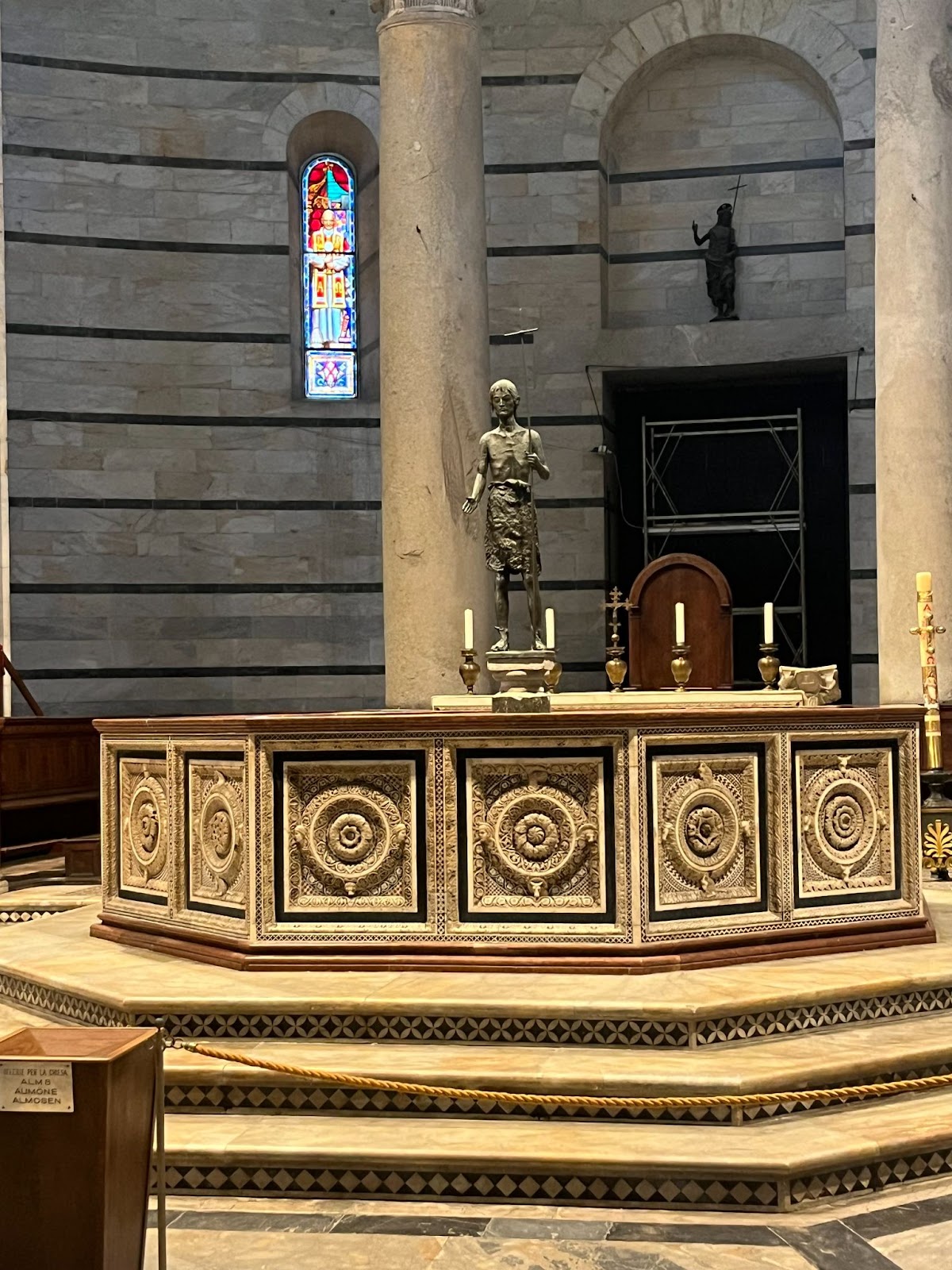
The reason for a baptistry, and the distinction between it and the main cathedral, is due to the Christian customs at the time. Until you were baptized, you were not allowed to enter the cathedral. So that people could be baptized in a holy place, many churches created separate structures—baptistries. This baptistry has something special about it, though.
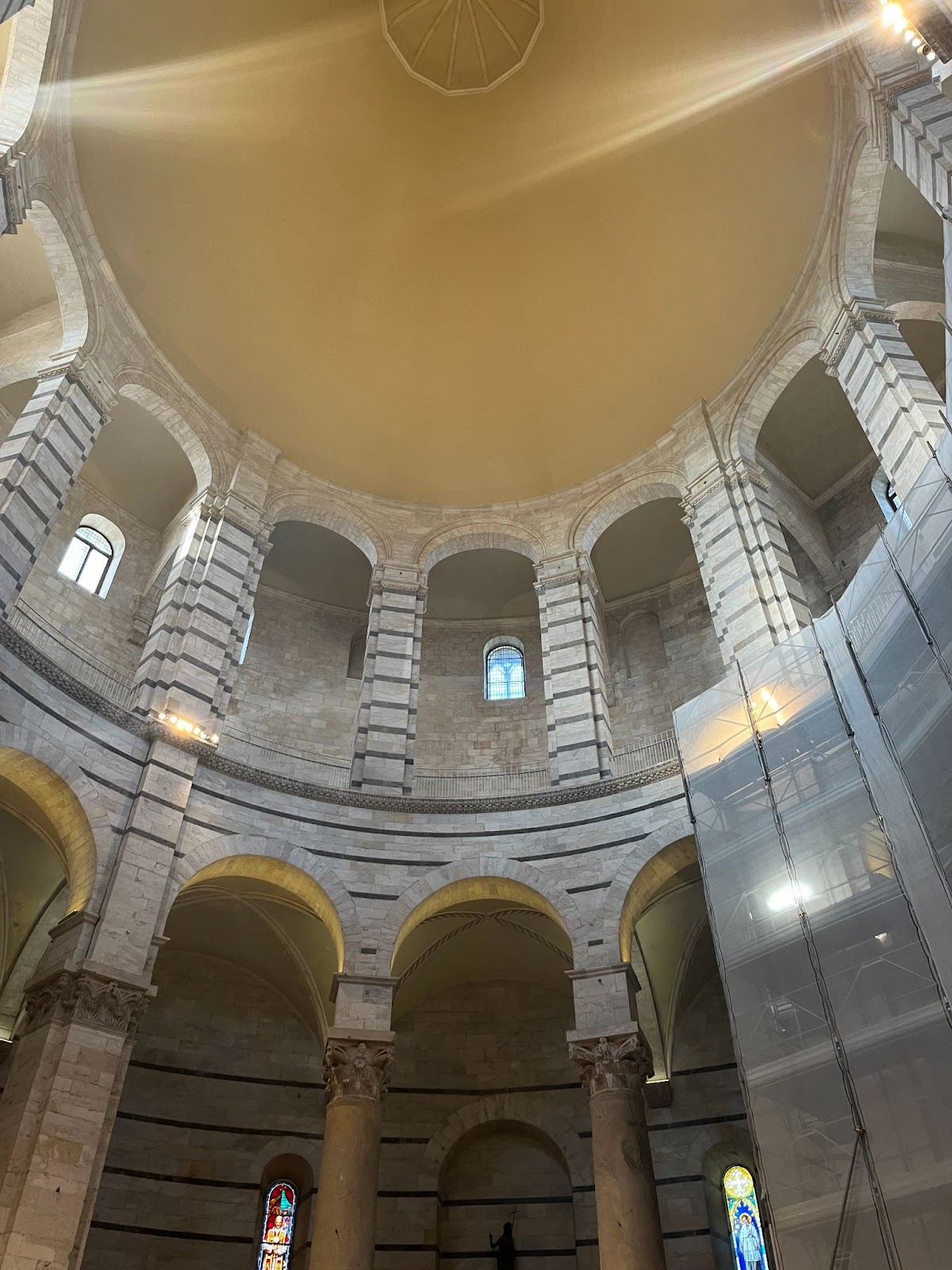 Due to the large dome in the ceiling and its spaciousness, the baptistry has an incredible echo. To be precise, this echo has a delay of 12 seconds. Every half an hour a guardian comes in to harmonize with themselves, or more accurately their own echo. Next, the leaning tower of Piza.
Due to the large dome in the ceiling and its spaciousness, the baptistry has an incredible echo. To be precise, this echo has a delay of 12 seconds. Every half an hour a guardian comes in to harmonize with themselves, or more accurately their own echo. Next, the leaning tower of Piza.
 Despite what some might say, the tower was built to be straight. It was built one floor at a time, but around the time they made the third or fourth floors, they realized that the tower was leaning. The reason for this is due to the soil it was placed on, as it contains a lot of mud. Because of the leaning the project was put on hold for over a century until they could finally manage to build the rest. Over the course of its life, there have been many times when it was likely to fall and had even started to sink into the ground. Because of this, in modern times efforts to increase its structural integrity were made, fixing both issues. Now, how is the inside of the tower? While the very middle is completely empty, stairs wrap around the inside of it. Due to the slant, the stairs are incredibly disorienting, so much so that I couldn’t make it even halfway up. Regardless, it was interesting to see.
Despite what some might say, the tower was built to be straight. It was built one floor at a time, but around the time they made the third or fourth floors, they realized that the tower was leaning. The reason for this is due to the soil it was placed on, as it contains a lot of mud. Because of the leaning the project was put on hold for over a century until they could finally manage to build the rest. Over the course of its life, there have been many times when it was likely to fall and had even started to sink into the ground. Because of this, in modern times efforts to increase its structural integrity were made, fixing both issues. Now, how is the inside of the tower? While the very middle is completely empty, stairs wrap around the inside of it. Due to the slant, the stairs are incredibly disorienting, so much so that I couldn’t make it even halfway up. Regardless, it was interesting to see.
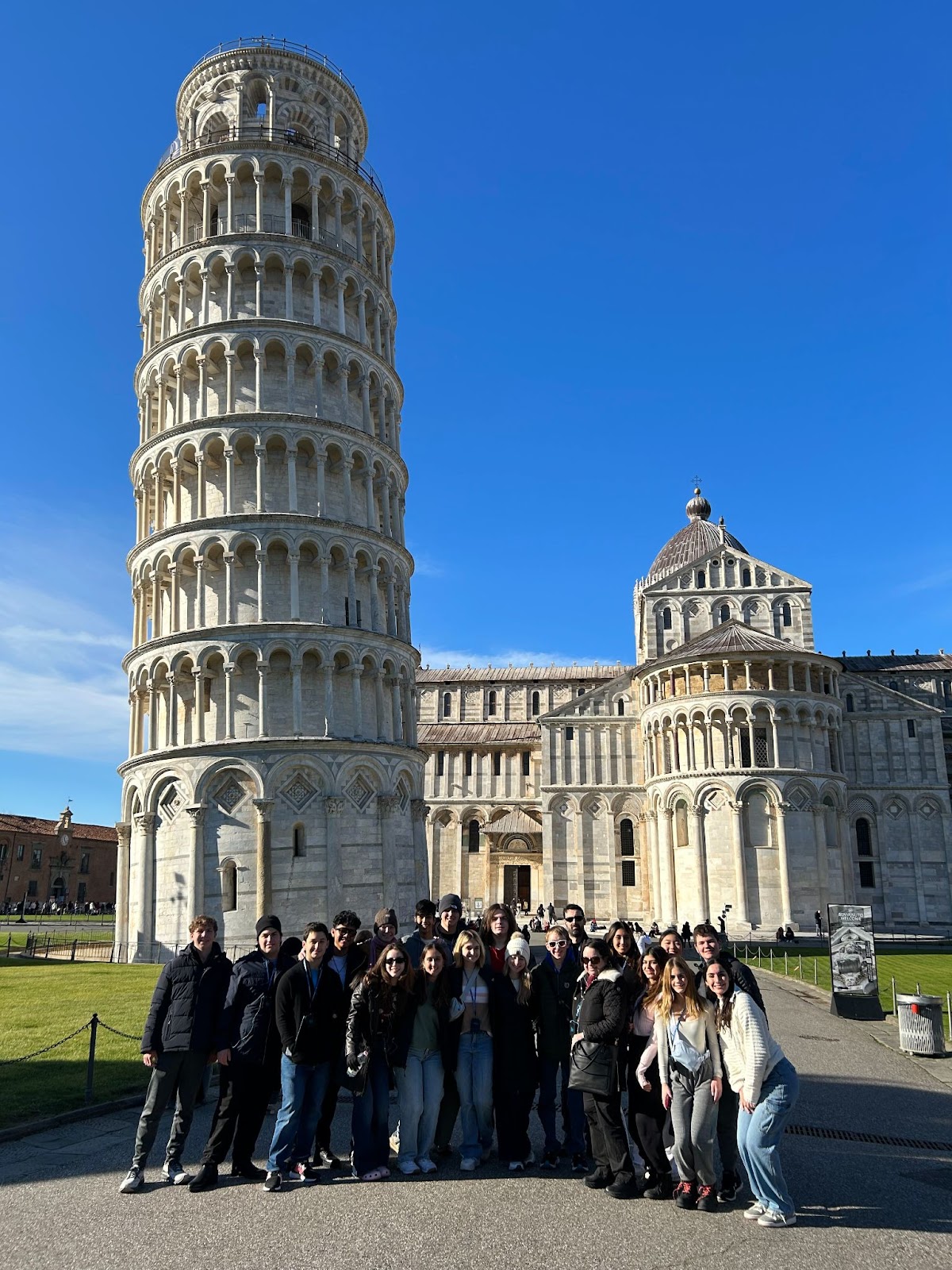
The Duomo di Pisa, or the Pisa Cathedral is the oldest structure in the Piazza dei Miracoli, as it was created in medieval times. It was dedicated to the Assumption of the Virgin Mary.
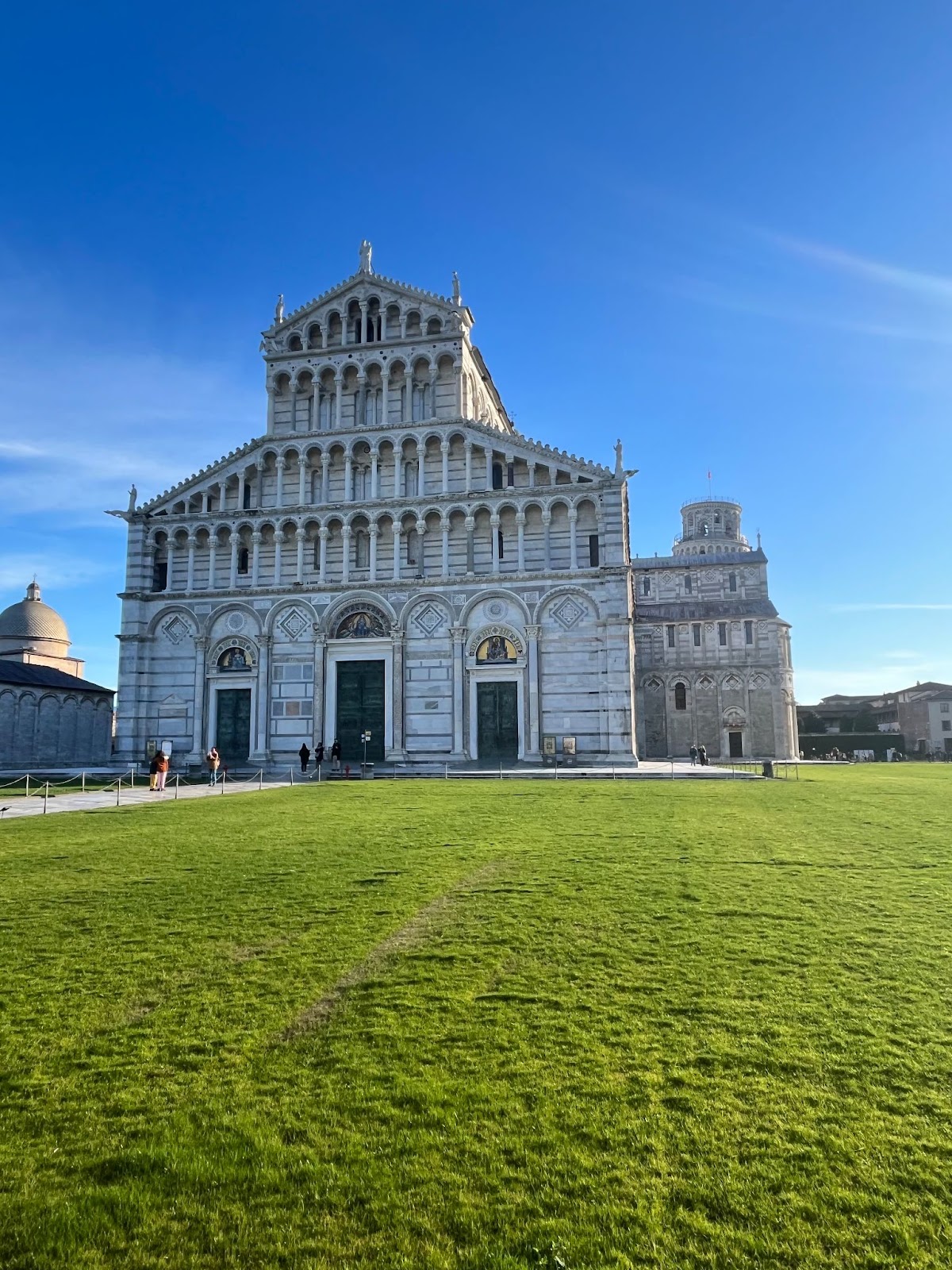
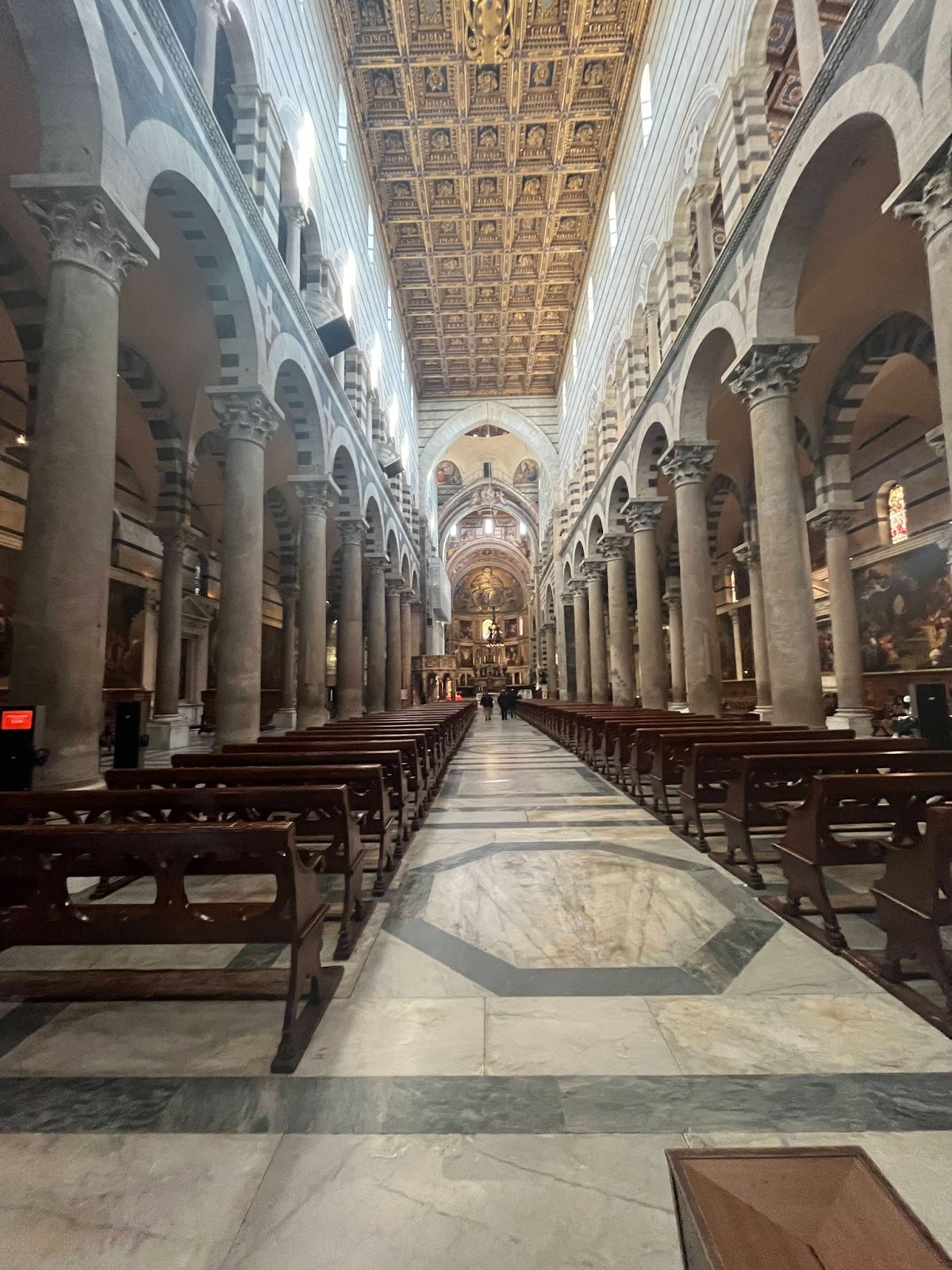 Quite frankly, the cathedral is huge. Along the walls are painted murals of scenes from the bible, and in the very middle you can see the art in the dome up above.
Quite frankly, the cathedral is huge. Along the walls are painted murals of scenes from the bible, and in the very middle you can see the art in the dome up above. 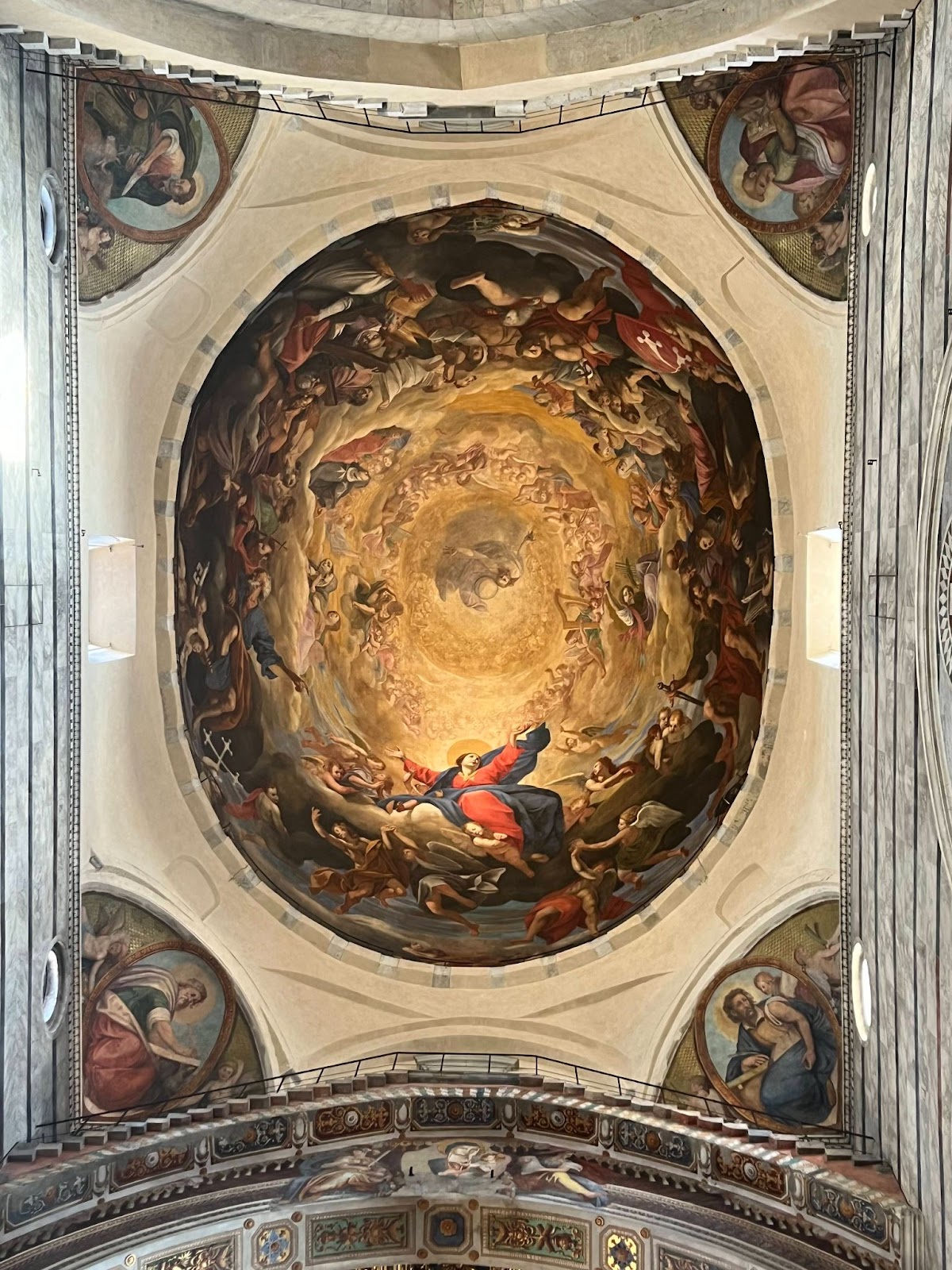 Finally, the cathedral houses the body of Henry VII in a decorated tomb. For an hour after we finished touring, we went out to get food from nearby food places.
Finally, the cathedral houses the body of Henry VII in a decorated tomb. For an hour after we finished touring, we went out to get food from nearby food places.
After this, we made our way back to Florence to see the Uffizi Gallery, where many Renaissance paintings, as well as sculptures, were kept by the Medici family. First, we saw many Ancient Greek statues. The reason that the Medici family wanted these is because they saw Greek art as the highest form of art, especially their ability to sculpt the human body.
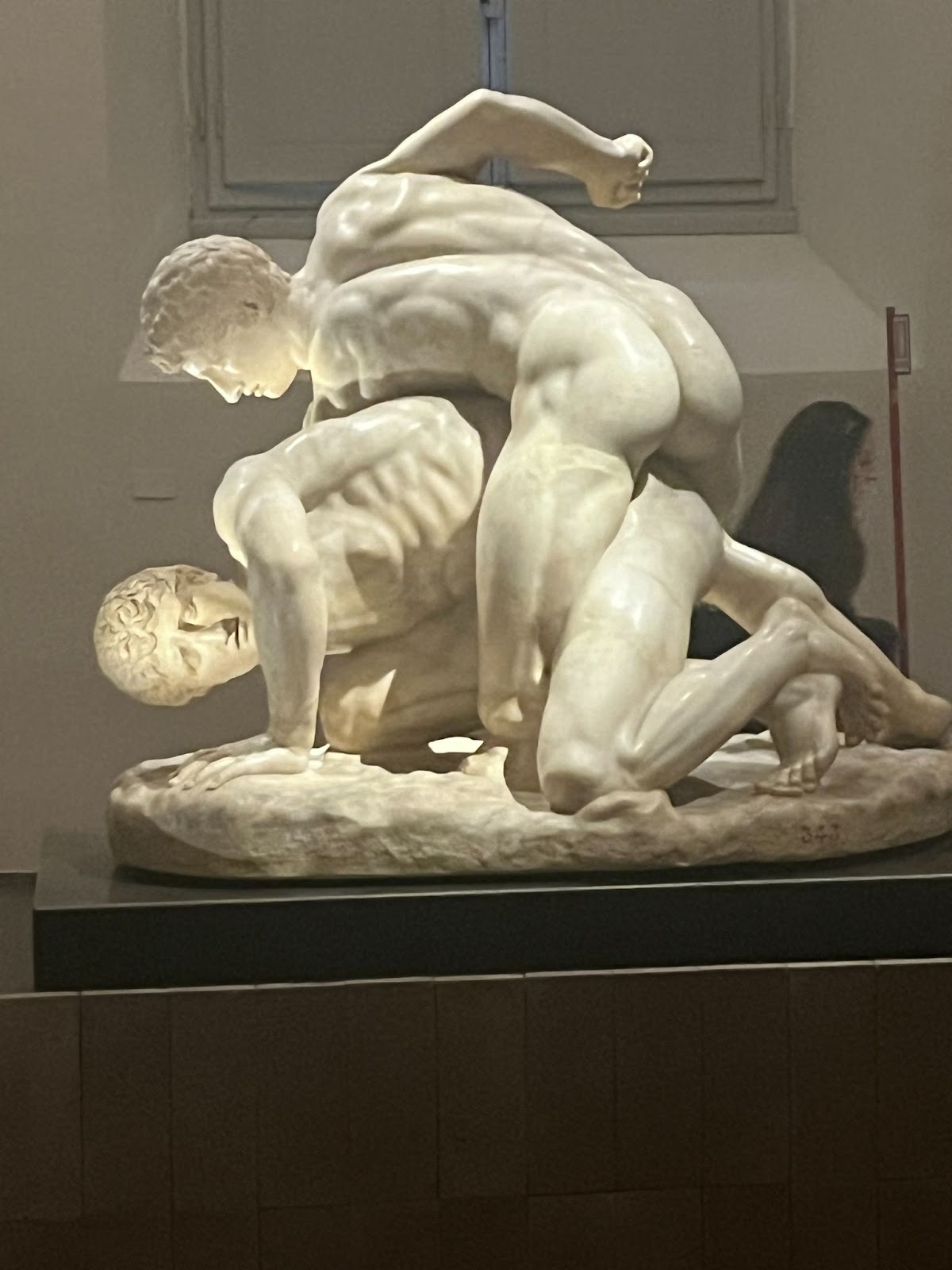
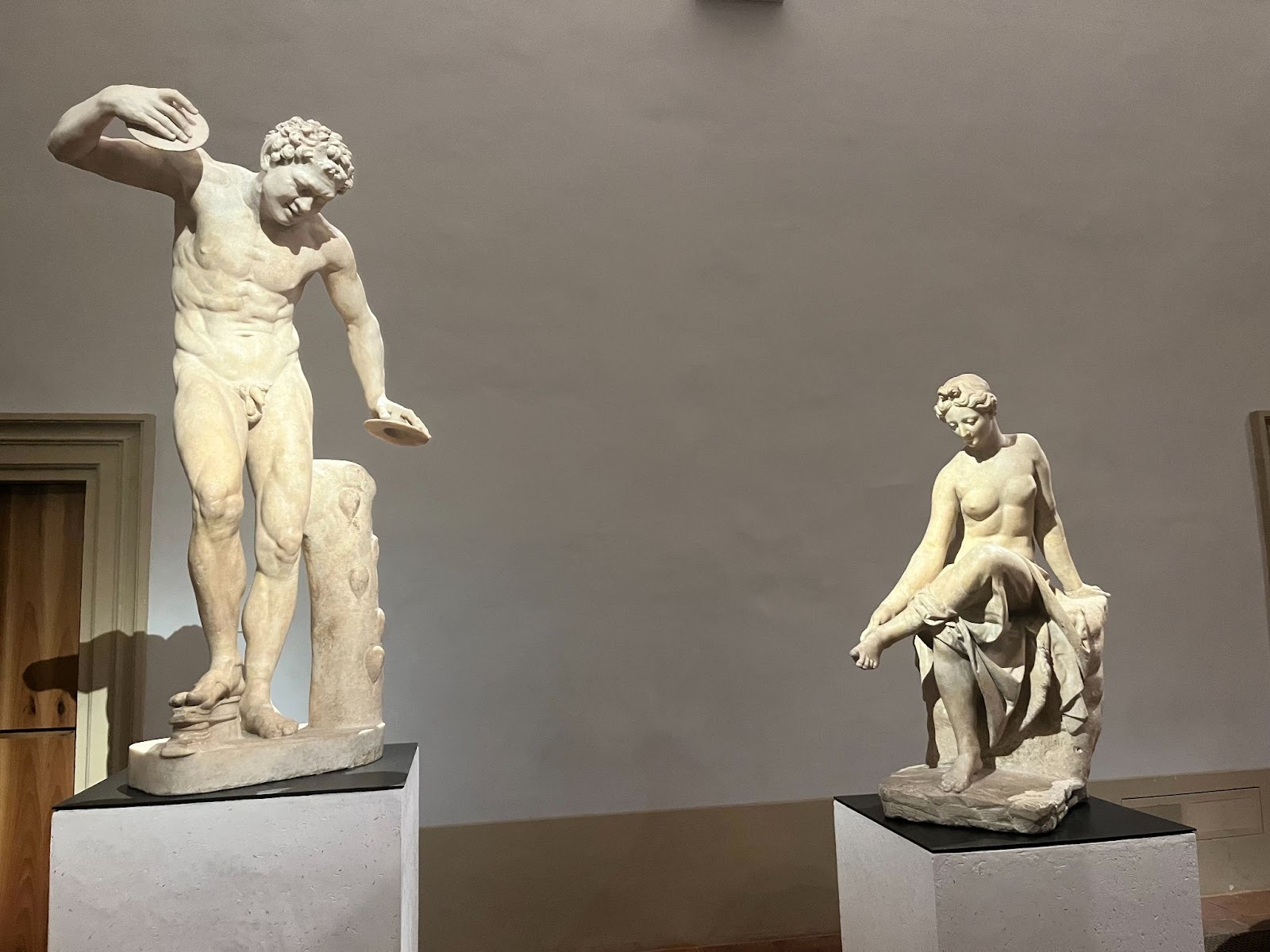
Next was the “Byzantine” era art, which came before the start of the Renaissance. There are three main differences between Byzantine and Renaissance art, and that is the focus on Christianity, anatomy, and perspective. While quite a bit of Renaissance art is of Christianity, Byzantine art almost always has a focus on Christianity. Artists at this time struggled with both perspective and anatomy, creating paintings that appear almost cartoonish.
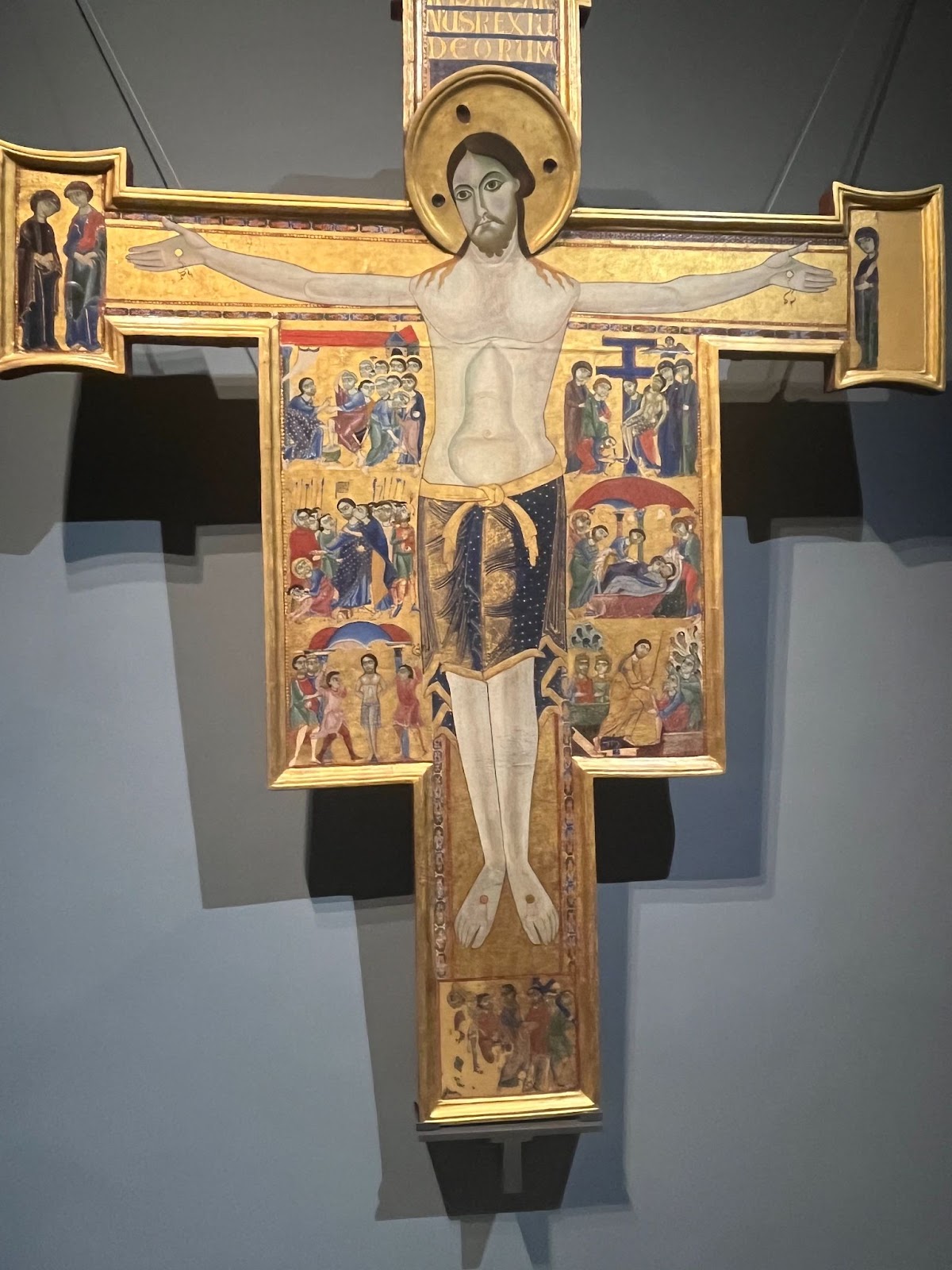
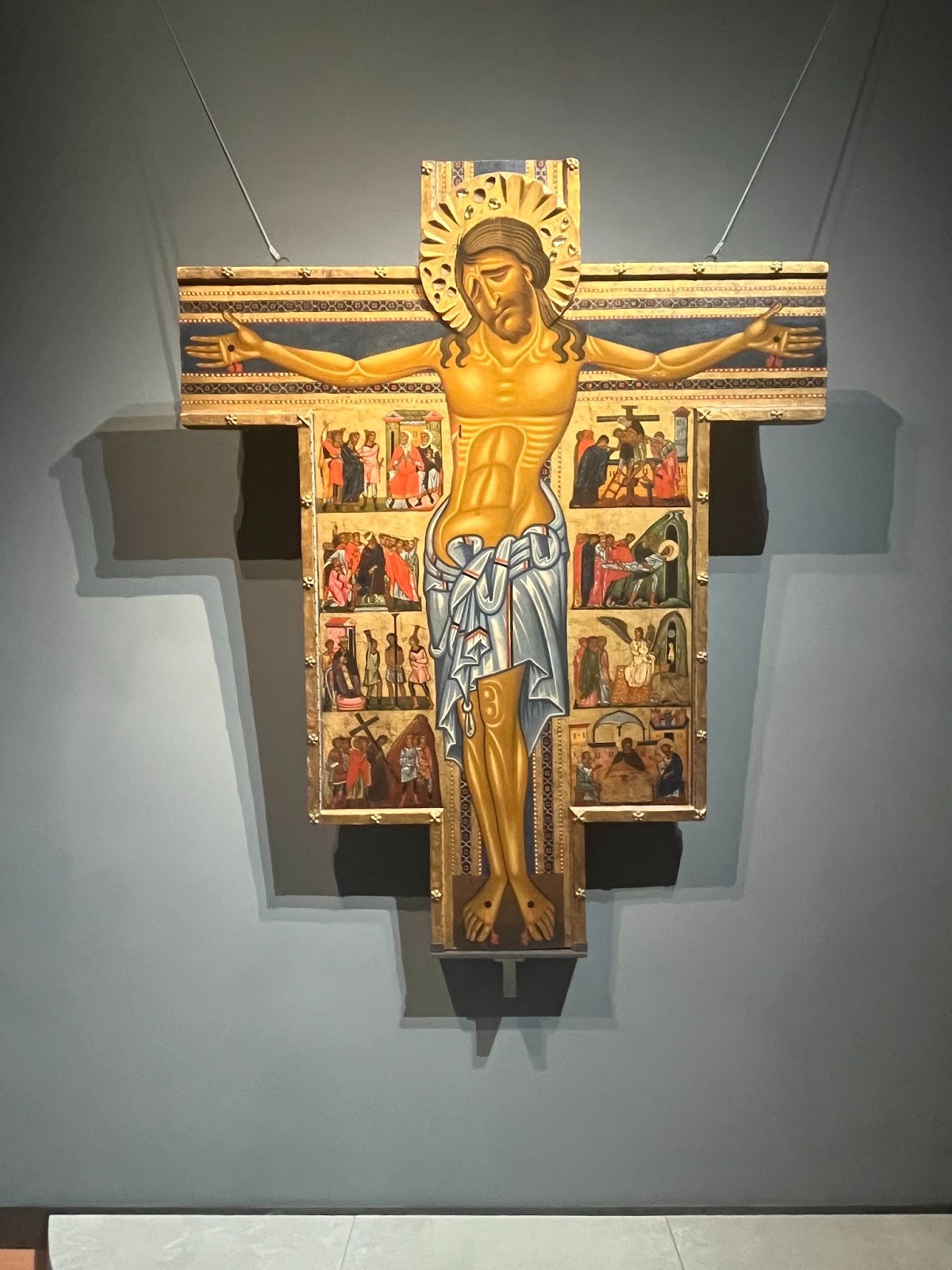
Now, compare this Byzantine art of Mary to the Renaissance version.
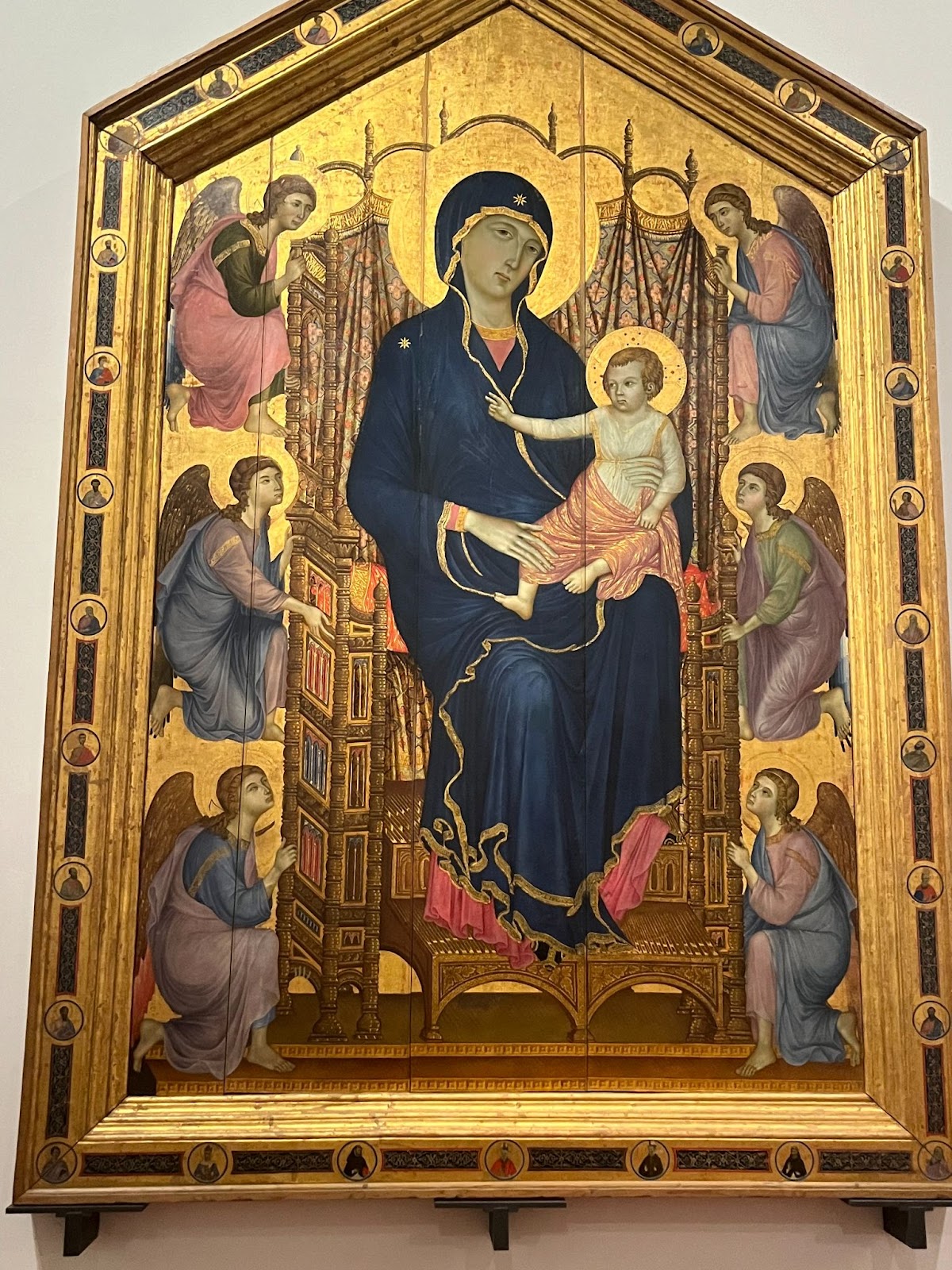
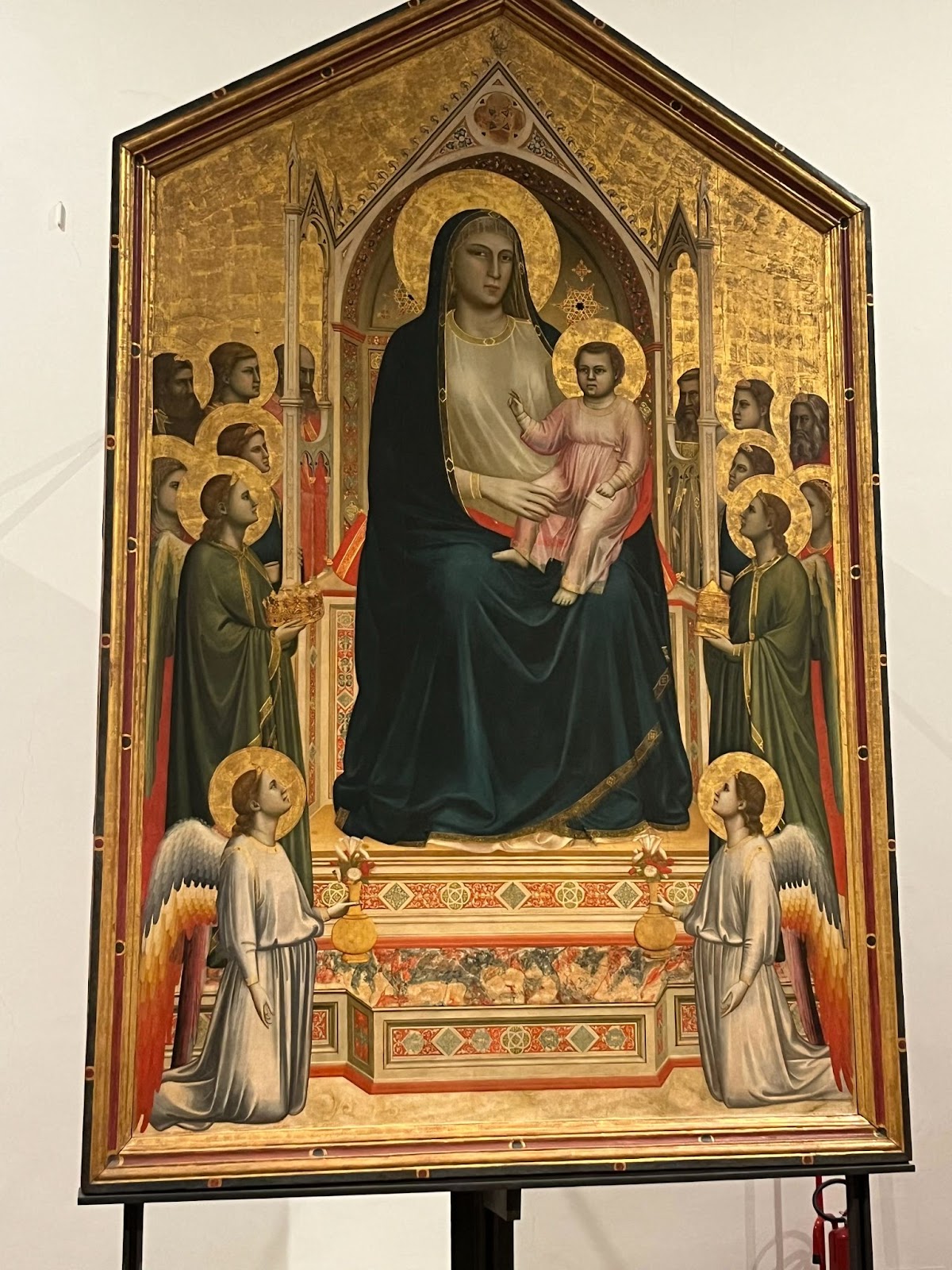 You can quite easily see how different these are. While the Byzantine depiction has Mary with a large head and little definition in her face, the Renaissance version is depicted as how a woman’s face would be. Also note the depth, as you can see the angels get smaller in the background, and even the depth on Mary’s breasts.
You can quite easily see how different these are. While the Byzantine depiction has Mary with a large head and little definition in her face, the Renaissance version is depicted as how a woman’s face would be. Also note the depth, as you can see the angels get smaller in the background, and even the depth on Mary’s breasts.
After our visit to the gallery, we went off to the hotel, and at around 7:10 we made our way to the restaurant, where I had a salad, pizza, and gelato. It was pretty good. After that, we retreated to our hotel rooms, and the day was over.
By: June Courville